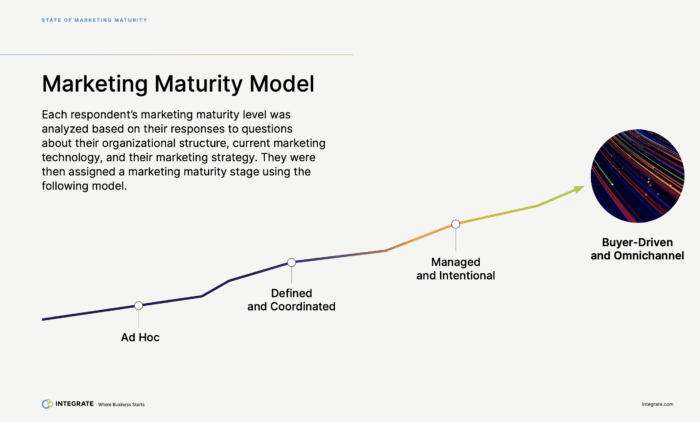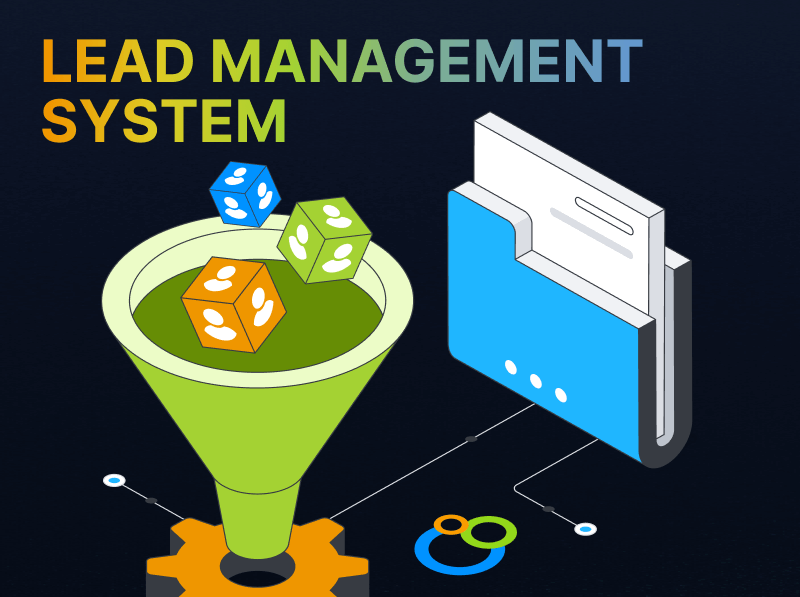Marketing Maturity in the Age of the Buyer: The Revenue Marketer Perspective
Forrester predicted 2020 would be the rise of “The Hero CMO.” CMOs and their marketing organizations would showcase the ability to deliver intelligent customer journeys with provable revenue enabled by our investments. Unfortunately, what occurred were layoffs, burnout, budget pressures, and streamlined tech stacks. With all the pressures, many were left asking themselves, did we lose sight of what matters to the buyer? And for those thriving, how can we become even more buyer-centric?
I have been so inspired by so many of our customers who rode the wave and thrived in the last 18 months. In today’s rapidly-evolving B2B marketing landscape, it’s more important than ever to adopt a buyer-centric approach. This means we need to reframe our marketing teams’ roles, and functions and recognize what needs to change and how.
Recently, Forrester’s Matt Papertsian and I hosted a webinar, “Marketing Maturity in the Age of the Buyer: The Revenue Marketer Perspective,” where we analyzed demand/revenue marketing strategy across people, processes, and technology. Our goal: to help you meet revenue targets and reach full marketing maturity with Precision Demand Marketing.

The jumping off point for our discussion: the Marketing Maturity Curve, which helps marketers pinpoint where they are in the journey to a buyer-driven and omnichannel Precision Demand Marketing strategy. The curve is a revealing tool for discussing the current strategies marketing organizations are using, and what they should address next to move closer to a buyer-driven marketing strategy.

What today’s effective B2B marketers look like
According to Matt Papertsian, today’s successful CMOs see themselves as business unit leaders. B2B marketing leaders need to be “buyer-centric” and that means the ability to listen, see, interact, engage, and truly understand buyers.
The marketing leaders who are succeeding today are the ones working with sales, finance, product, and the CEO through active listening. Some of the best CMOs have become COOs or CSOs. Marketing understands the customer, the buyer, and provides intelligence to the business to enter emerging markets, informing growth strategies and more. Expectations have grown for marketing and sales leaders, and Papertsian calls out “The Top Nine Emerging Company CEO Expectations for Marketing and Sales leaders” in his latest blog.
Papertsian suggests that B2B marketing leaders ask themselves the following questions to become more effective marketers:
- Who are our buyers?
- Who are we focusing on?
- What are their needs?
- How is my company going to grow?
- How is marketing going to contribute to that?
The challenges we face
One of the biggest challenges is that our B2B buyer has changed. According to Forrester’s 2021 Buyer Study, the number of interactions to close a deal went from 17 in 2019 to 27 in 2021––a 60% increase. How many companies planned for those additional interactions and truly thought through those connections?
What’s more is that there are structural and technological challenges affecting our teams. In a report we conducted on the “The State of Marketing Maturity: The Future of Marketing,” we found that 26% of revenue marketing teams are still siloed by tactic and there is low shared responsibility across functions.
Additionally, 63% of revenue marketers use manual processes to decipher ROI. This means that there is a critical lack of insight into buyers’ habits, pains, and motivations, and, as a result, their existing tech stacks don’t support more mature and buyer-centric programs.
Another challenge is that too many revenue marketers are focused on programs and tactics. We’re trying to meet existing marketing KPIs rather than engaging with the right buyers. That’s in part due to the traditional structure of our jobs. Our marketing metrics focus too much on volume rather than on creating relationships with the right buyers. This is reflected in our research findings that 47% of revenue marketers are multi-channel but lack a unified buyer-centric message.

How we solve these issues and reach marketing maturity.
To meet the challenges, existing tech stacks must be designed to support more mature, buyer-centric programs. We need greater coordination and collaboration between all revenue operations teams and marketing. Teams need to grow; additional people are required to execute marketing initiatives that target buyers. And the additional personnel need to be positioned for collaboration, so all concerned can focus on the buying experience, not on working in silos. These changes not only can improve databases and optimize marketing’s resources, but they can also help quantify marketing’s contribution to business ROI and customer growth.
Ultimately, achieving Precision Demand Marketing maturity requires the ability to flex your strategy and ensure you’re balancing your plans with what’s required to connect with your buyers as they react to your channels or programs.
In this always-on, digital landscape with only 15% of B2B companies truly in market for a solution at any given moment and more than 70% of a buying cycle completed before ever talking to a Salesperson, now more than ever don’t we have an opportunity to truly influence Sales? Can marketing be “The Hero CMO or Marketing Org” from early 2020 predictions?
To learn more about Forrester’s and Integrate’s perspective on what it means to move up the maturity scale and achieve PDM, watch the full webinar.
And for more insight on how re-envisioning your team structure starts by ensuring your objectives and GTM are aligned cross-functionally, don’t miss a discussion between our CMO, Deb Wolf and Matt Heinz on a CMO’s perspective to marketing maturity. Matt Heinz will also discuss the state of the B2B marketing industry at our Game Changers 2021 virtual conference.









